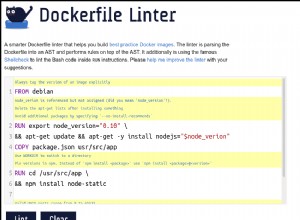Array negli script di shell


Come installare i social media decentralizzati della diaspora su Debian 10

Come installare il server HTTP OpenLiteSpeed con PHP su Ubuntu 18.04 LTS

Come posso comprimere/decomprimere i file utilizzando il File Manager?

Raccolta delle shell Linux:le 15 shell Linux open source più popolari

Come usare Hadolint per peluccare i tuoi file Docker